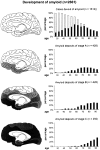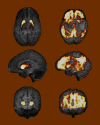Aβ Imaging: feasible, pertinent, and vital to progress in Alzheimer's disease
- PMID: 22218879
- PMCID: PMC3261395
- DOI: 10.1007/s00259-011-2045-0
Aβ Imaging: feasible, pertinent, and vital to progress in Alzheimer's disease
Figures



Comment on
-
Amyloid-β imaging with PET in Alzheimer's disease: is it feasible with current radiotracers and technologies?Eur J Nucl Med Mol Imaging. 2012 Feb;39(2):202-8. doi: 10.1007/s00259-011-1960-4. Eur J Nucl Med Mol Imaging. 2012. PMID: 22009379 No abstract available.
References
-
- Moghbel MC, Saboury B, Basu S, Metzler SD, Torigian DA, Långström B, Alavi A. Amyloid-beta imaging with PET in Alzheimer’s disease: is it feasible with current radiotracers and technologies? Eur J Nucl Med Mol Imaging 2011. doi:10.1007/s00259-011-1960-4. - PubMed
-
- Klunk WE, Engler H, Nordberg A, Wang Y, Blomqvist G, Holt DP, Bergström M, Savitcheva I, Huang GF, Estrada S, Ausén B, Debnath ML, Barletta J, Price JC, Sandell J, Lopresti BJ, Wall A, Koivisto P, Antoni G, Mathis CA, Långström B. Imaging brain amyloid in Alzheimer’s disease with Pittsburgh Compound-B. Ann Neurol. 2004;55(3):306–319. doi: 10.1002/ana.20009. - DOI - PubMed
Publication types
MeSH terms
Substances
Grants and funding
LinkOut - more resources
Full Text Sources
Medical

